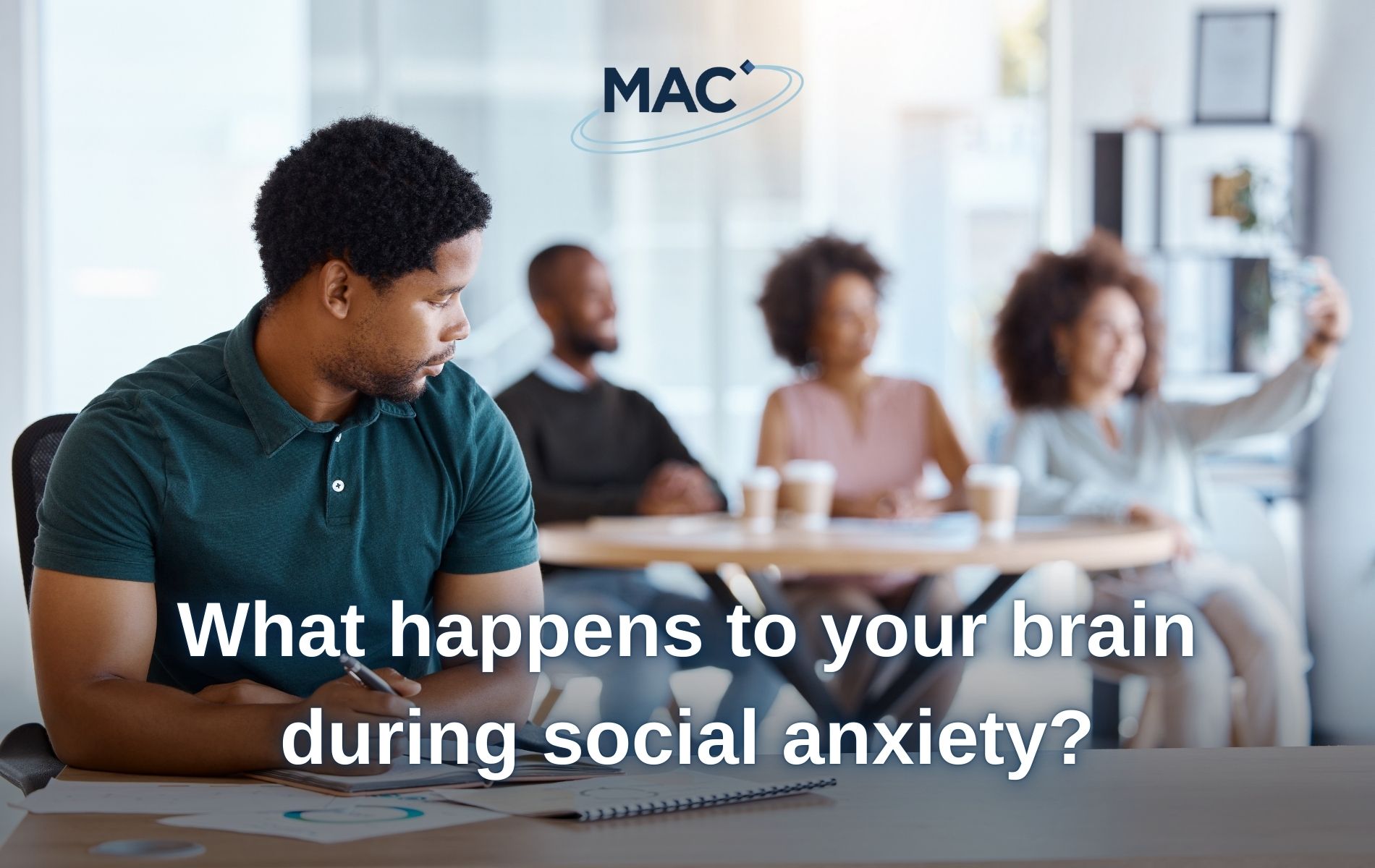As technology has evolved, social interaction has become increasingly less necessary to participate in the modern world. From online shopping and no-contact food delivery to the rise of social media, face-to-face communication has become less common, and to some less popular. In 2018, one in ten people in the UK went more than three days without speaking to someone in person1, a figure which has likely been exacerbated following the pandemic. While for some this is a negative part of the modern world, for those living with social anxiety, remote interaction can enable participation in society without triggering a stress response.
What is social anxiety?
Many people experience nerves when speaking to new people or when presenting to a crowd, and those feelings may have you asking, ‘do I have social anxiety?’ However, social anxiety goes beyond surface feelings of shyness in public settings. People living with social anxiety disorder experience intense fear or anxiety at the possibility of being scrutinised or judged by others. This can include social situations like meeting new people, job interviews, dates, answering a question in a meeting or lesson, and more. The fear can be so debilitating that they may feel prohibited from going to work, school, or even leaving the house2.
If you have social anxiety, you may experience the following symptoms when in social situations:
- Increased heart rate
- Blushing, sweating, or trembling
- Nausea
- Difficulty making eye contact, speaking, or being around people even when you want to
- Avoidance and extreme fear of judgement
- Disproportionate levels of self-consciousness
- Feelings of stiffness
- Feeling your mind ‘go blank’2.
What happens in the brain during social anxiety?
The amygdala is a part of the brain that is critical in our emotional processing and in our reflexive ‘fight-or-flight response3. It works in tandem with the pre-frontal cortex – the area of the brain responsible for decision-making and reasoning – to assess threats and determine the appropriate response. The ‘fight-or-flight’ response is characterised by increased heart rate, sweating, tremors, and anxiety4, demonstrating a significant overlap with the physical symptoms of social anxiety.
Brain scans have shown that people living with social anxiety experience hyperactivity in the amygdala. For people without the condition, when they experience anxiety, their prefrontal cortex evaluates the threat, and if none is detected, it sends signals to the amygdala, defusing the stress response. For people living with social anxiety, however, the prefrontal cortex amplifies amygdala activity. Their brain interprets social situations as legitimate threats5.
Interested in trying a potential new social anxiety treatment?
Social anxiety can be difficult to manage, but it doesn’t have to control your life. MAC Clinical Research are conducting a new study for a potential social anxiety treatment, but we need your help. If eligible you will receive up to £2,510 for your time and commitment, plus reasonable travel expenses. Find out how you can get involved and make a difference to a medical condition that matters to you by visiting our social anxiety study page.
References
2 National Institute of Mental Health – Social Anxiety Disorder: More Than Just Shyness | NIMH
3 PMC – Understanding Emotions: Origins and Roles of the Amygdala
4 Britannica – Fight-or-flight response | Definition, Hormones, & Facts




